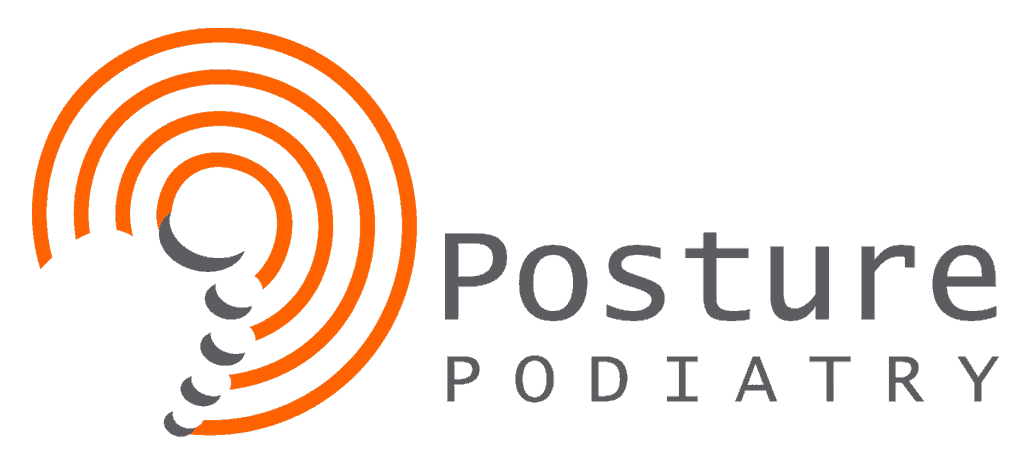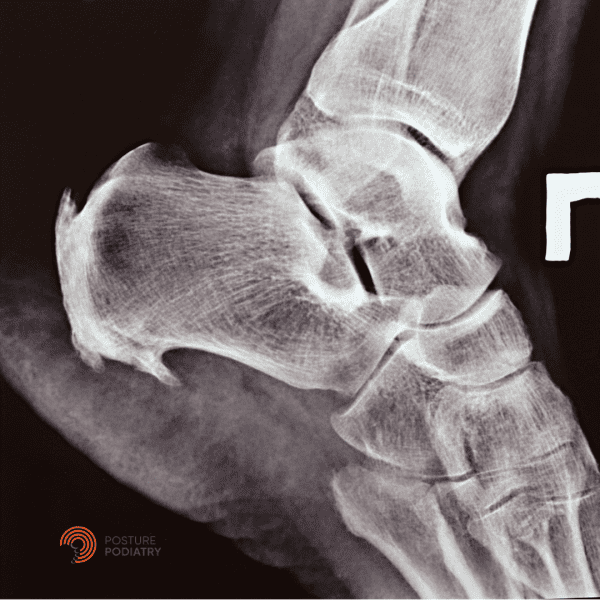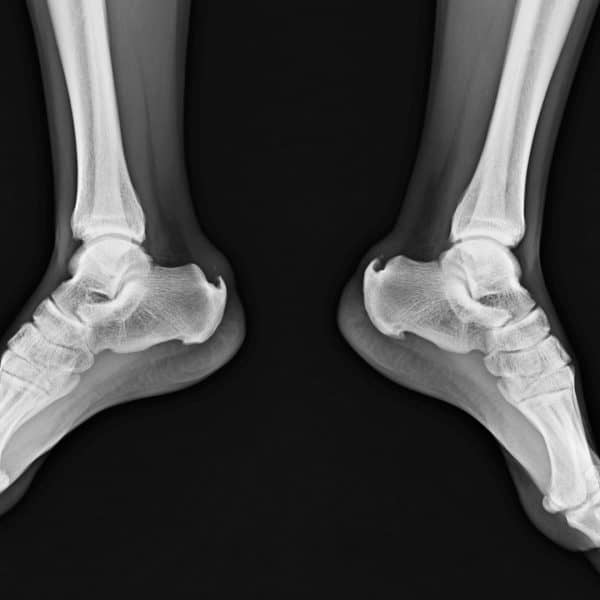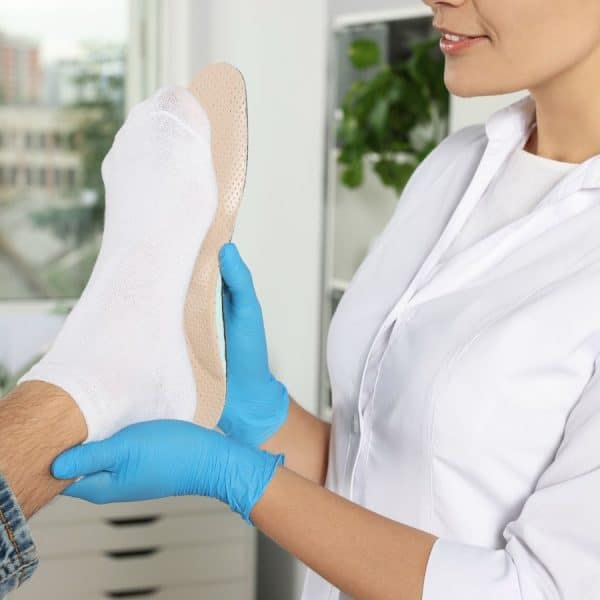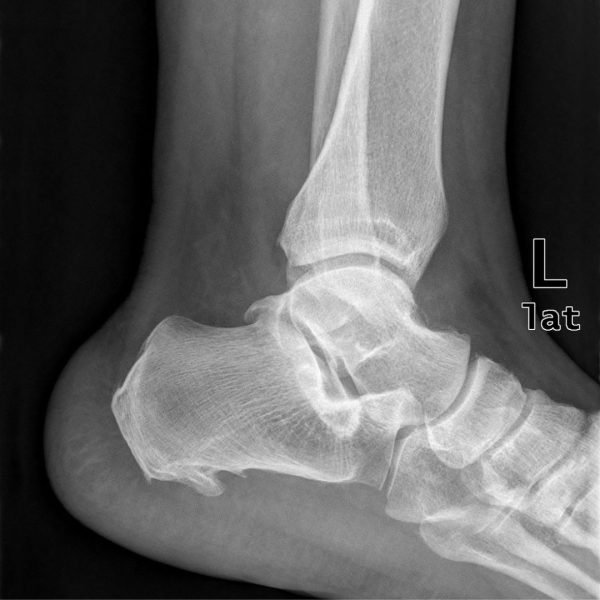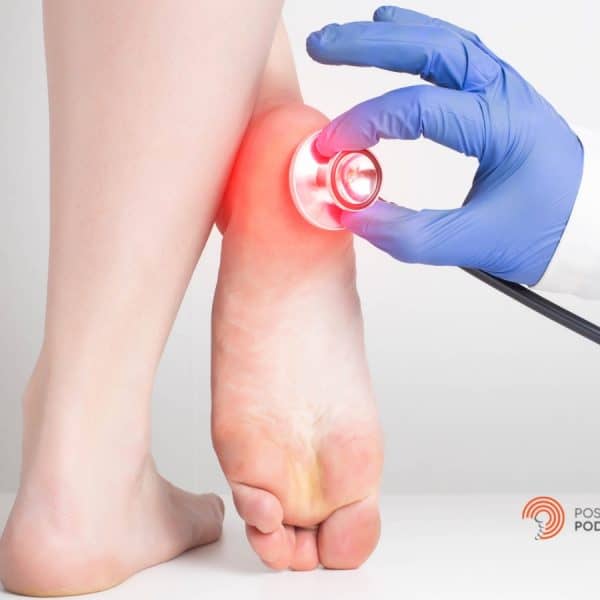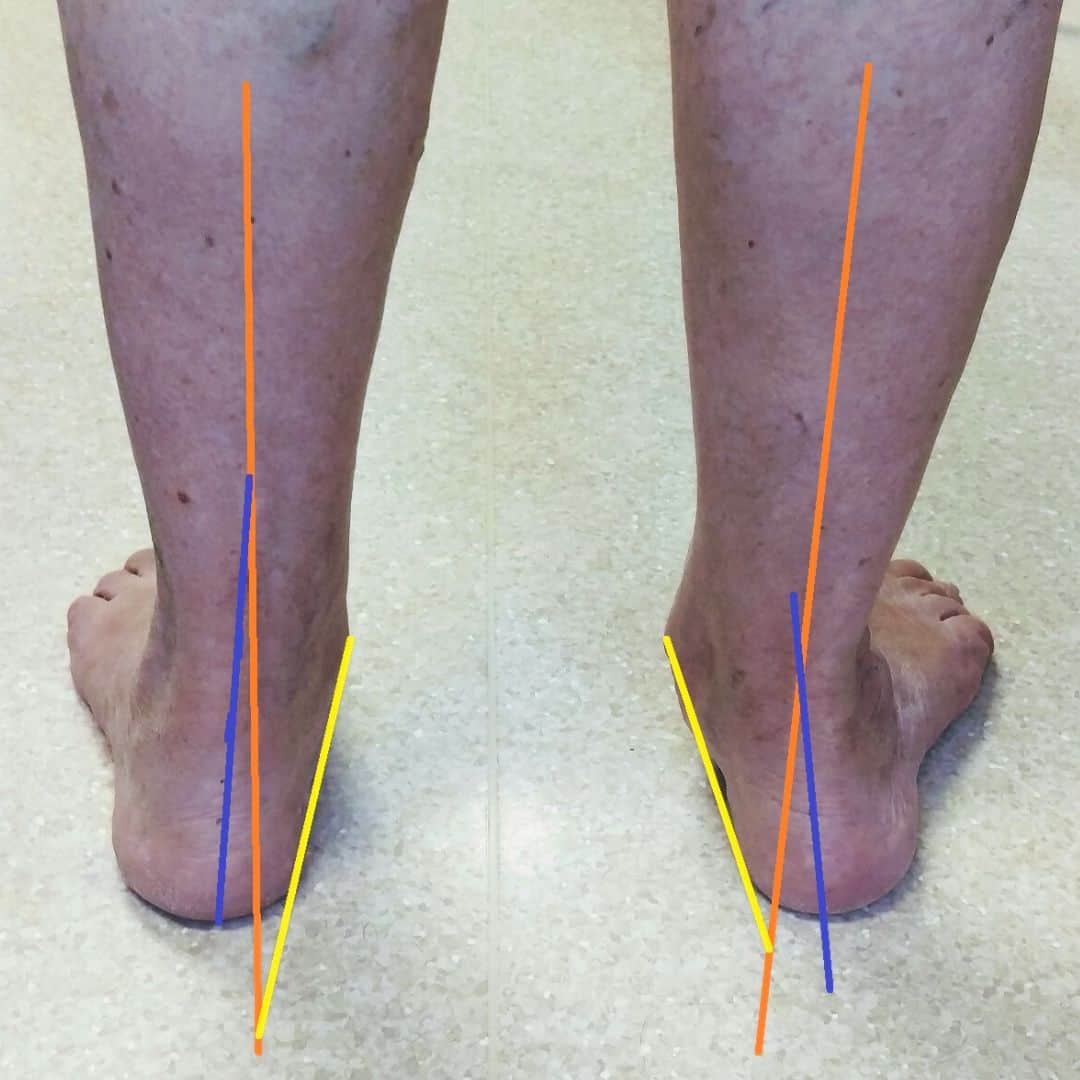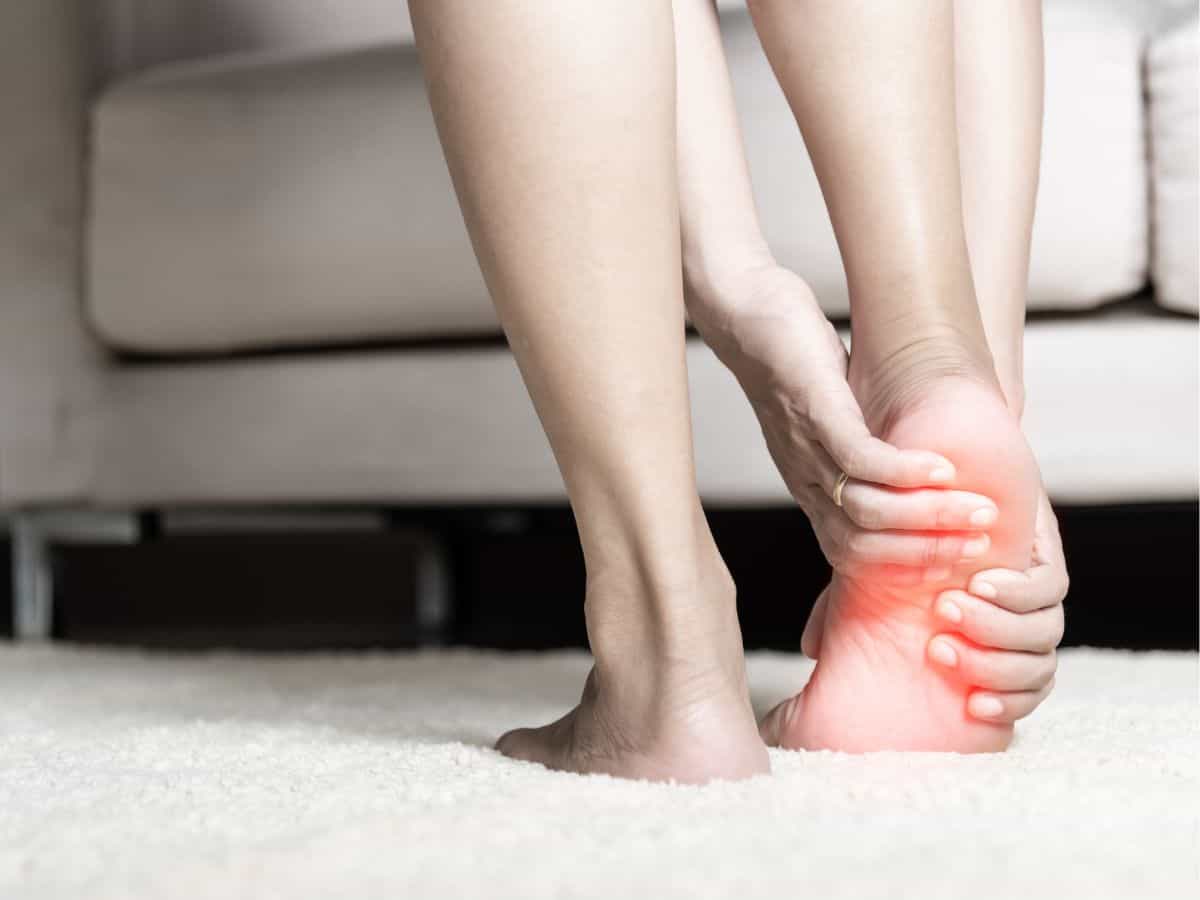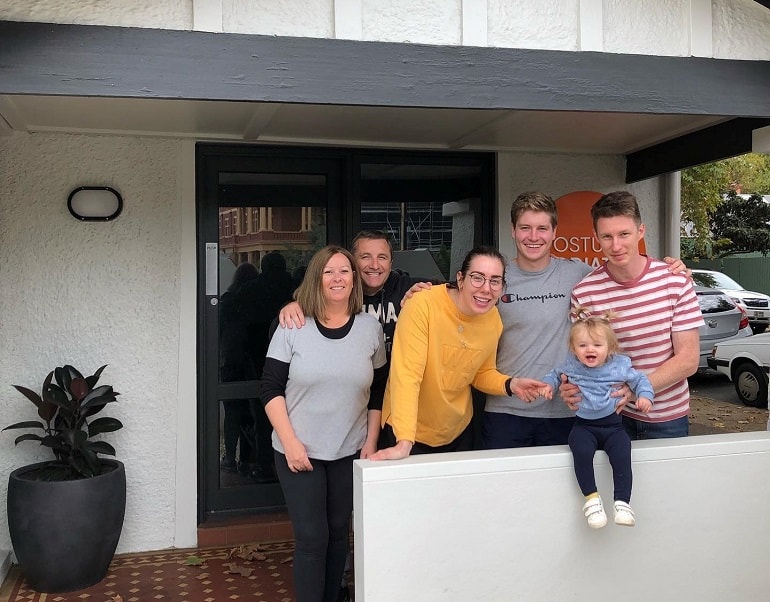Can heel pain really be caused by a heel spur?
Have you ever experienced a sharp pain in your heel that just won’t seem to go away? Heel pain is quite common and this problem can sometimes be diagnosed as a painful heel spur.
What is a heel spur?
A heel spur is a bony outgrowth that forms on the underside of the heel bone (calcaneus). It often develops in response to chronic inflammation and pulling of the plantar fascia ligament that connects the heel to the toes. The spur occurs when calcium deposits build up on the underside of the heel bone, usually secondary to inflammatory conditions.
In this article, we’ll dive into the causes and symptoms of heel pain and associated heel spurs, as well as the most effective treatments and preventative measures. From stretching and physical therapy to orthotics and surgery, we’ll explore all the options for getting people back on their feet and pain-free. Whether you’re an athlete or just someone who spends a lot of time on their feet, understanding heel pain, heel spurs and how to treat them is crucial for maintaining your overall health and wellbeing. So let’s get started!
Find an Adelaide Podiatrist Who Understands Heel Spur and Heel Pain Treatment
BOOK ONLINE or call Call 8362 5900 today to see if we can help.
What causes heel spurs?
Heel spurs typically develop as a result of chronic long-term strain on the ligaments and muscles of the foot. Heel spurs can be caused by a variety of factors, but the most common is repeated stress to the foot. This stress can come from a variety of sources, including running, jumping, or standing for long periods of time. People who are overweight or obese are also at risk of developing heel spurs, as the extra weight puts additional strain on the feet.
Other risk factors for heel spurs include:
– Age: As we age, the cartilage that cushions the joints in our feet begins to wear down and undergoes degenerative changes, which can lead to the development of heel spurs.
– Inflammatory Disorders: People with arthritic conditions including osteoarthritis, rheumatoid arthritis and gout are more likely to develop bone spurs.
– Poor footwear: Shoes that don’t fit properly or provide adequate support/cushioning can contribute to the development of trauma, stress and heel spurs.
It’s important to note that not everyone who experiences foot stress or has these risk factors will develop heel spurs. It’s also very important to understand that heel spurs themselves rarely cause pain. The bone spur formation itself is usually just a sign that inflammation has been present.
Find an Adelaide Podiatrist Who Understands Heel Spur and Heel Pain Treatment
BOOK ONLINE or call Call 8362 5900 today to see if we can help.
What are the symptoms of heel spurs?
Most heel spurs are totally painless and don’t actually cause discomfort. In fact, most people only discover they have heel spurs following x-rays for another problem. The exception to this rule would be a heel spur fracture, however, fractured heel spurs are quite rare. Any heel pain is usually the result of inflammation of soft tissues adjacent to the heel spur. The bone spur forms following a process called fibrosis or ‘scar tissue’ formation. So it’s actually the soft tissue damage and inflammation which causes the pain. The body attempts to heal the injured area with scar tissue formation and, if it fails, calcium production occurs by the body in attempt to finalise the healing process.
The most common symptom of heel pain is pain directly underneath the bottom of the heel, particularly when standing, walking or arising from rest. The pain is often described as a sharp, stabbing sensation that may be worse in the morning or after periods of rest. In some cases, the pain may radiate to other parts of the foot, such as the arch or ball of the foot.
Other symptoms of heel pain may include:
– Swelling or inflammation in the heel area
– Redness or warmth in the affected area
– Difficulty moving the foot or ankle
If you experience any of these symptoms, it’s important to see a podiatrist for an evaluation.
Find an Adelaide Podiatrist Who Understands Heel Spur and Heel Pain Treatment
BOOK ONLINE or call Call 8362 5900 today to see if we can help.
How are heel spurs diagnosed?
Diagnosis of heel spurs usually involves x-rays or MRI scans.
Diagnosing heel pain typically involves a physical examination and a review of your medical history. Your podiatrist may also order imaging tests such as X-rays or an MRI if they feel it’s needed. Heel spurs are often incidental findings on x-rays and help to confirm the presence of heel spurs along with other abnormalities.
During the physical examination, your podiatrist will likely ask you to stand and walk to evaluate your gait and look for signs of inflammation or swelling in the foot. They may also press on different areas of the foot to check for tenderness or pain. Further assessment may include joint range of motion analysis and muscle strength and flexibility testing.
Based on the results of the examination, diagnostic taping and imaging tests, your podiatrist will be able to determine the cause of your heel pain and recommend the most appropriate course of treatment.
Find an Adelaide Podiatrist Who Understands Heel Spur and Heel Pain Treatment
BOOK ONLINE or call Call 8362 5900 today to see if we can help.
What are the treatment options for heel pain and heel spurs?
Heel spurs which are fractured will need treatment similar to that of a regular fracture. If heel spurs are asymptomatic, treatment is usually not required.
Treatment options for heel pain and associated heel spurs may include:
- Rest and avoiding activities that exacerbate the pain.
- Ice application to reduce inflammation.
- Strapping or taping of the foot
- Stretching and strengthening exercises.
- Activity and training advice.
- Foot mobilisation.
- Footwear advice.
- Orthotic shoe inserts to decrease stress and to provide support.
- Extracorporeal shock wave therapy (ESWT) to stimulate healing.
- Dry needling.
- Corticosteroid injections for severe pain and inflammation.
- Surgery (in rare cases when other treatments fail).
Treatment for heel pain typically involves a combination of treatment modalities. Fortunately, surgery is rarely required. The goal of treatment is to relieve pain and inflammation, as well as prevent the development of any further problems.
Are there any exercises or stretches that can help with heel spurs?
Specific exercises and stretches can help as part of the overall treatment of heel pain symptoms, but there are no specific stretches which will help to resolve heel spurs.
Heel pain exercises may include calf stretches, plantar fascia stretches, towel curls, and toe stretches.
It’s important to consult with a podiatrist with a thorough understanding of heel spurs and heel pain causes. Stretching and strengthening exercises can be helpful if they are administered at the right time in the right dosage. Your podiatrist can help with an appropriate, personalised exercise prescription.
The effectiveness of any exercises is largely determined by proper technique and loading.
Find an Adelaide Podiatrist Who Understands Heel Spur and Heel Pain Treatment
BOOK ONLINE or call Call 8362 5900 today to see if we can help.
Orthotics and other devices for heel pain and heel spurs
Orthotics and other devices can be effective in relieving the pain associated with heel spurs. These include:
– Shoe orthotics: Specifically designed Inserts that provide additional features which help to offload damaging forces on the painful heel and reduce stress on the heel bone.
– Night splints: Wearing a splint at night can aid the healing process if plantar fascial injury is evident.
– Moon boot: A moon boot or brace that supports the ankle and foot can help reduce stress on the heel bone especially when a heel spur or heel bone is fractured.
Do I need surgery to treat a heel spur?
Surgery is not needed if heel spurs are asymptomatic, however, in rare cases, surgery may be necessary to resolve chronic heel pain which fails to respond to conservative treatment. Fortunately, less than one percent of heel pain cases require surgery if the right conservative management is applied in a timely manner.
Can heel spurs be prevented?
While it is not always possible to prevent heel spurs, there are steps you can take to reduce the risk, such as:
- Wearing supportive, properly fitted shoes that provide adequate support and cushioning.
- Avoiding the sudden onset of excessive high-impact activities.
- Gradually increasing exercise intensity and duration.
- Maintaining a healthy weight to reduce stress on the feet.
- Stretching and exercising regularly to improve foot strength and keep the muscles and ligaments flexible.
Find an Adelaide Podiatrist Who Understands Heel Spur and Heel Pain Treatment
BOOK ONLINE or call Call 8362 5900 today to see if we can help.
Other Frequently Asked Questions about Heel Spurs:
Are heel spurs the same as plantar fasciitis?
No, heel spurs and plantar fasciitis are not the same, although they often coexist. Plantar fasciitis refers to the inflammation of the plantar fascia, while heel spurs are bony growths. Heel spurs may or may not cause pain.
Can heel spurs go away on their own?
Heel spurs will not go away on their own, but they will rarely be the primary cause of heel pain. The focus of treatment is usually on managing the underlying causes and relieving symptoms rather than directly removing the heel spur itself. It’s very important to ascertain an accurate heel pain diagnosis so treatment can focus on the specific cause of pain.
Find an Adelaide Podiatrist Who Understands Heel Spur and Heel Pain Treatment
BOOK ONLINE or call Call 8362 5900 today to see if we can help.
How long does it take to recover from a heel spur?
Recovery time for heel pain associated with heel spurs can vary depending on the diagnosis and severity of the condition and the chosen treatment approach. With appropriate treatment and diligent self-care, many people begin to experience relief within a few weeks to several months. With chronic conditions relief can take much longer. An early heel pain diagnosis is always best to minimise scar tissue formation and to ensure the most appropriate course of treatment is applied.
Can heel pain and heel spurs come back after treatment?
Heel pain and associated heel spurs can potentially recur, especially if the underlying causes are not addressed or if there is a reoccurrence of conditions like plantar fasciitis. It is important to continue practicing preventive measures even after treatment.
Are there any complications associated with heel spurs?
While heel spurs by themselves are not typically considered problematic, they can contribute to chronic foot pain and discomfort especially if fractured or traumatised.
Can wearing specific shoes or orthotics help with heel spurs?
Wearing supportive shoes with proper arch support and cushioning can help alleviate symptoms and reduce strain on the feet and load on the heel bone. Orthotic shoe inserts or custom-made orthotics can provide additional support and alignment, promoting proper foot mechanics and reducing discomfort.
Once again, obtaining an accurate diagnosis by and an experienced podiatrist is always the best first step. Once the diagnosis is confirmed, personalised advice and appropriate treatment options for your specific situation can be considered.
Conclusion
Heel spurs and associated heel pain can be a painful and debilitating condition, but with the right diagnosis, treatment and preventative measures, getting back to normal movement and pain-free mobility is entirely possible without the need for surgery.
Whether you’re an athlete or just someone who spends a lot of time on your feet, if you’re experiencing heel pain or other foot symptoms, don’t hesitate to see a podiatrist for an evaluation and treatment recommendations.
Find an Adelaide Podiatrist Who Understands Heel Spur and Heel Pain Treatment
BOOK ONLINE or call Call 8362 5900 today to see if we can help.
